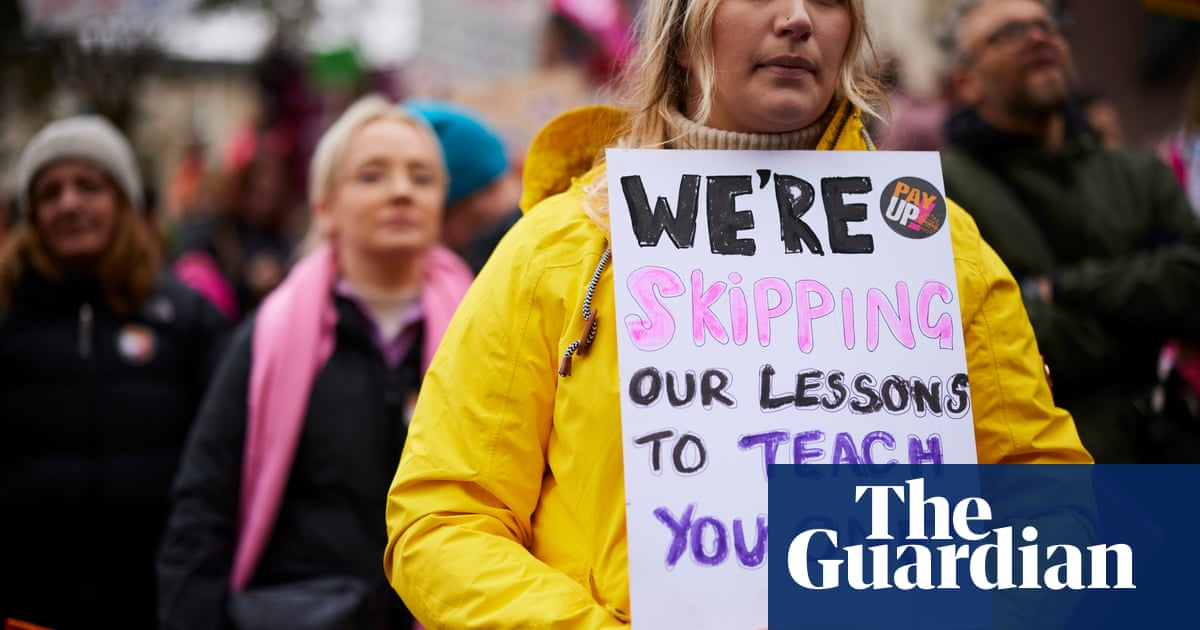
Headteachers say the government needs to be on “high alert” to curb school Covid outbreaks, after more than 100,000 children were absent with confirmed or suspected infections last week – the highest number for England during the pandemic.
The figures from the Department for Education showed that fewer than 92% of pupils were present in classrooms on 16 September, with 59,000 absent with confirmed cases of Covid-19 and a further 45,000 off with suspected cases.
In total, 122,000 children were absent from state schools for Covid-related reasons last week, including 16,000 marked off as isolating and another 2,000 “due to attendance restrictions being in place to manage an outbreak,” according to the DfE.
Paul Whiteman, general secretary of the National Association of Head Teachers, said: “These national figures mask some significant issues arising at a local level, and we already know of schools that are struggling to keep classes open due to outbreaks occurring.
“It is crucial that both central and local government are now on high alert and are ready to react quickly if and when cases rise rapidly or outbreaks occur. The next few weeks will be crucial.”
The 103,000 pupils with confirmed or suspected cases is higher than the number at the end of the last school year, a little more than two months ago. In mid-July the DfE said just 82,000 children were absent with Covid cases.
Secondary schools were the worst hit, with nearly one in every 100 pupils off with confirmed Covid cases. Including non-Covid absences, the overall absentee rate for secondary schools was 10%, twice as high as pre-pandemic absences.
One in every 100 teachers in all types of state schools were also absent with Covid last week.
The statistics are the first official signs of the spread of the virus within schools and colleges since the start of the new school year, when the use of preventive measures such as mask-wearing, social distancing and small group “bubbles” was halted by the DfE.
In July more than a million children were absent but that included 930,000 self-isolating because of classroom contacts. This year the DfE has ruled that children who are close contacts of confirmed or suspected cases do not need to self-isolate unless they also display symptoms.
Geoff Barton, general secretary of the Association of School and College Leaders, said he was aware of schools where “significant numbers” of students were absent.
“We are hopeful that the vaccination programme for 12- to 15-year-olds will help to reduce this level of disruption. However, the government must also take more action to support schools and colleges,” Barton said.
“It should launch a public information campaign to encourage twice-weekly home testing among pupils in the appropriate age groups, provide funding for high-quality ventilation systems in schools and colleges, and commit to providing more support if onsite testing is directed under the contingency framework.”
Barton also urged the government to publish its plans for A-level and GCSE exams in spring, saying it was “extremely frustrating” that guidance had still not been issued.
Nadhim Zahawi, the new education secretary, said it was “fantastic” to see more than 91% of children back in the classroom, compared with 87% at the same time last year.
“That’s down to the hard work of teachers, support staff as well as families, whose efforts have been heroic in making sure children can get back to school safely,” Zahawi said.
“The rollout of the vaccine to those aged 12-15, which started this week, is another significant step in building the walls of protection from the virus across society.”
Kate Green, the shadow education secretary, said: “The Conservatives’ chaotic failure to plan ahead or to listen to Labour, parents and teachers and get ventilation and mitigations in place saw over 122,000 children out of school again last week. This is not good enough. The Conservatives have left schools in a mess; the new education secretary urgently needs to set this right.”












